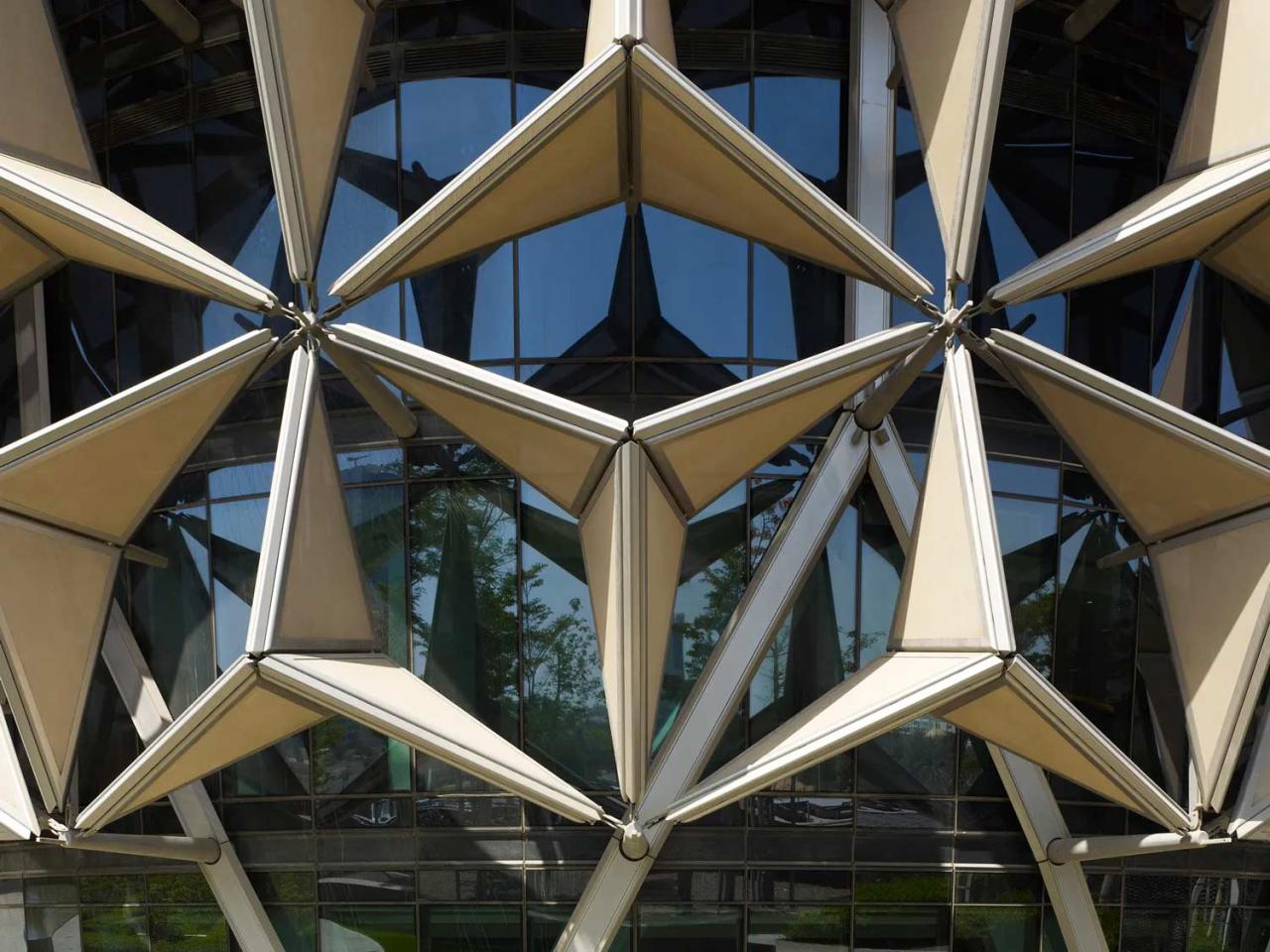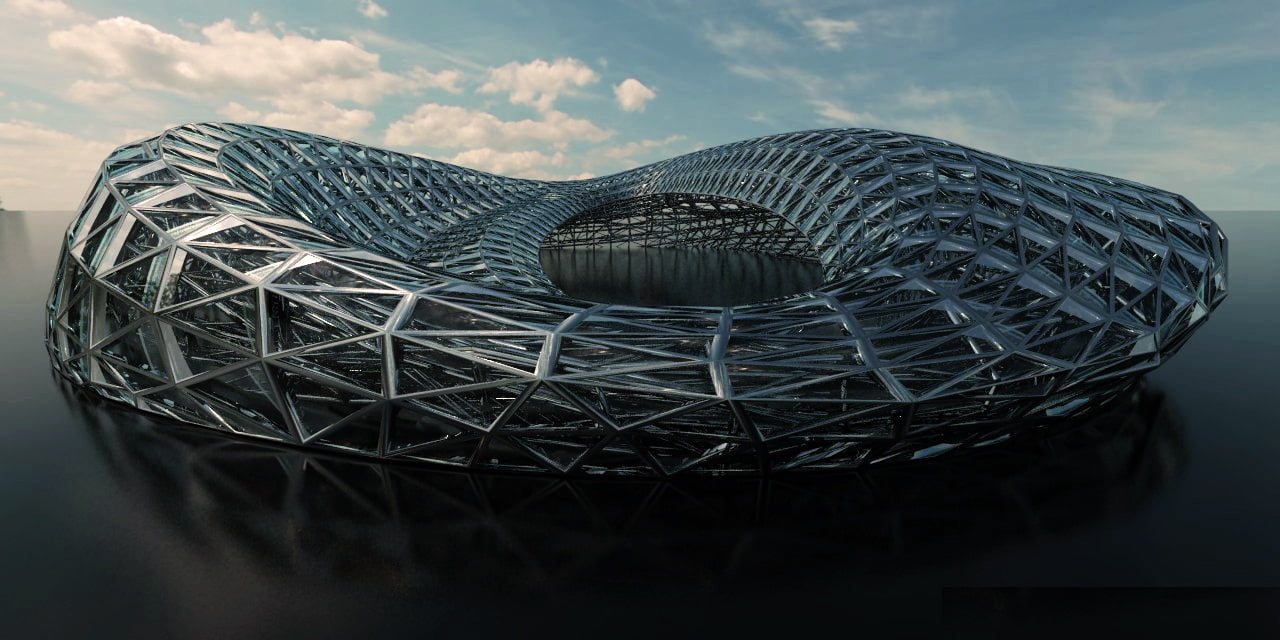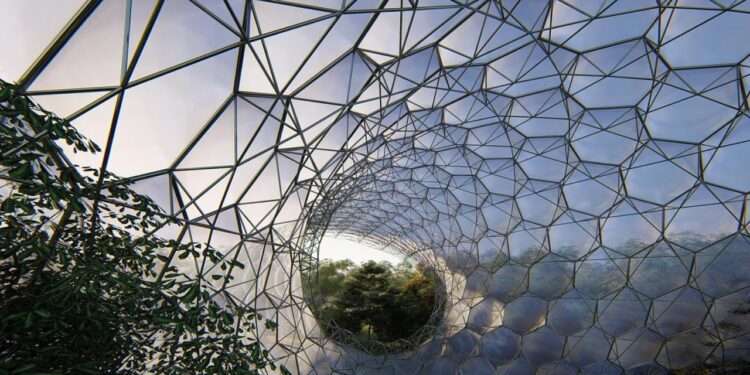The history of design has been a story of human ingenuity constrained by the limitations of our tools. For centuries, designers and architects meticulously crafted forms by hand, a process that was intuitive but inherently linear and labor-intensive. The digital revolution brought new tools, but they largely served to digitize the traditional workflow. Today, however, we are at the precipice of a new creative paradigm, one where the designer is no longer a sculptor of static forms but an architect of dynamic systems. This is the world of parametric design.
Parametric design is not just another piece of software; it is a fundamental shift in the way we think about and create. It moves beyond a focus on final form to a focus on the underlying logic, relationships, and rules that govern that form. In this world, a design is not a fixed object but a flexible system defined by parameters—variables that can be easily changed to generate endless variations. This approach unlocks a level of complexity, adaptability, and efficiency previously unimaginable, redefining what is possible in architecture, product design, engineering, and beyond.
This comprehensive guide is a deep dive into the fascinating world of computational design. We will explore the core concepts that define this methodology, dissect the key principles that make it so powerful, and examine its groundbreaking applications across diverse industries. We will also look at the essential tools that make it possible and confront the challenges that lie ahead as we step into a future where design is no longer a singular act of creation, but a continuous, data-driven evolution.
What is Parametric Design?

To truly grasp the power of parametric design, we must first understand its foundational ideas. It’s a departure from traditional design in both philosophy and execution.
A. Defining Parametric Design
At its simplest, parametric design is a process based on algorithmic thinking, where parameters and rules dictate the relationship between design components. Instead of drawing a fixed shape, a designer creates a set of instructions. For example, a designer doesn’t draw a door; they create a system that says: “The door’s height is always 1.5 times its width. The number of window panes is equal to the door’s width divided by 2.” By changing a single variable, like the door’s width, the entire geometry and all its related elements update automatically. This allows for rapid iteration and exploration of a design space that would be impossible to navigate manually.
B. Parametric vs. Traditional Design
The contrast between these two approaches is stark and illuminating.
- Traditional Design: This method is about creating a final, static artifact. If a change is needed—for example, if a client wants a larger window—the designer must manually redraw the entire section, and any related elements (like the supporting wall or roofline) must also be adjusted by hand. This is a time-consuming and often error-prone process.
- Parametric Design: This method is about creating a dynamic system. A change to a single parameter, such as the window’s dimensions, automatically ripples through the entire design, updating all related components without the need for manual re-work. This allows the designer to focus on the logic and aesthetics, leaving the tedious calculations to the computer.
C. The Power of Parameters
Parameters are the variables or inputs that define the design. They can be explicit (a specific dimension, like height = 10 meters) or abstract (a data input, like the amount of sunlight on a building facade). These parameters are the building blocks of a parametric model. By linking them through a network of relationships, a designer creates a flexible system that can be manipulated with ease. The power lies in the fact that the entire design is a function of these variables, not a collection of independent forms.
D. The Role of Algorithms
An algorithmic design is a set of rules and instructions that a computer can follow to generate a form. In parametric design, these algorithms define the relationships between the parameters. They are the “recipes” that tell the computer how to build the design. A designer might use an algorithm to say, “Place a series of openings in this wall, with their size and spacing determined by the amount of natural light needed in each room.” This allows the design to be responsive to external data or performance goals, a concept that is central to computational design.
The Key Principles of Parametric Thinking
The methodology of parametric design is built on a set of core principles that drive its efficiency and creative potential.
A. Iteration and Optimization
Parametric design is inherently iterative. Because a design can be changed instantly by adjusting a single parameter, designers can explore hundreds, or even thousands, of variations in minutes. This allows for a rapid feedback loop where a designer can test and refine ideas at an unprecedented speed. The ability to generate countless variations also enables design optimization. A designer can use the parametric model to find the most efficient, cost-effective, or structurally sound version of a design based on a set of performance criteria, a process that is virtually impossible with traditional methods.
B. Data-Driven Design
A parametric model can be directly informed by data. This data can come from a variety of sources, such as environmental conditions (wind patterns, solar radiation), site-specific information (geography, topography), or even user behavior. For example, an architect can use a parametric model to design a building’s facade that automatically adjusts the size and angle of its windows to optimize for natural light and minimize heat gain throughout the day. This level of data-driven design ensures that the final product is not just aesthetically pleasing but also highly functional and responsive to its environment.
C. Complexity and Control
Parametric design excels at creating complex, intricate geometries that would be too difficult or time-consuming to model manually. Forms inspired by nature, such as branching patterns or cellular structures, can be created with a few simple rules. While this may seem like a loss of control, the opposite is true. The designer retains ultimate control by defining the rules and the parameters, allowing them to manage a high degree of complexity with a few simple inputs. The result is a design that appears organic and sophisticated but is founded on a logical and precise system.
D. Interoperability and Automation
Parametric workflows are designed to be seamless and automated. The parametric model is not a siloed tool; it can be integrated with other software and processes. A designer can create a model that is linked directly to a structural analysis program, a cost-estimation tool, and even a digital fabrication machine. A change in the design can automatically update the structural analysis, provide a new cost estimate, and generate the necessary code for a 3D printer or a CNC machine. This level of design automation streamlines the entire pipeline, from concept to physical object.
E. Adaptability and Responsiveness
A key advantage of parametric modeling is its ability to create designs that can easily adapt to changing requirements. If a client’s budget changes, a designer can adjust a cost parameter to automatically generate a more cost-effective version of the design. If new materials become available, a material parameter can be swapped out to instantly see the new possibilities. This makes parametric design a powerful tool for navigating the fluid and often unpredictable nature of the creative process.
Applications Across Industries
The principles of parametric design are proving to be universally applicable, transcending traditional disciplinary boundaries and driving innovation in a wide range of fields.
A. Architecture and Construction
This is where parametric design gained its initial traction and where its impact is most visible.
- Complex Facades and Structures: Architects are using parametric tools to create breathtaking, non-standard buildings. The Beijing National Aquatics Center, for example, used a parametric system to generate its unique “bubble” facade based on a soap bubble foam structure. This would have been impossible with traditional tools.
- Performance-Driven Design: Parametric models can be used to optimize a building’s performance. By linking the design to data on sun paths, wind direction, and thermal performance, architects can create buildings that are more energy-efficient, comfortable, and environmentally friendly.
- Mass Customization in Housing: Parametric systems allow for the mass customization of housing, where a single base model can be infinitely adapted to a specific client’s needs, budget, or site conditions, all with the click of a button.
B. Product Design and Engineering
Parametric design is revolutionizing how products are conceived and manufactured, particularly in the realm of 3D printing and advanced manufacturing.
- Biomimicry and Organic Forms: Designers can use parametric tools to create products that mimic the efficiency and beauty of natural forms. Generative design algorithms, for example, can be used to create an optimized part for a car or a piece of furniture that uses the least amount of material while maintaining structural integrity, often resulting in complex, organic-looking forms.
- Customizable Consumer Goods: Products like custom-fitted headphones, ergonomic grips for tools, and even footwear can be automatically generated based on an individual’s biometric data. This level of personalization is driving a new era of consumer goods.
- Medical and Prosthetic Design: In the medical field, parametric design is used to create highly customized prosthetics and orthopedic devices that are a perfect fit for a patient’s unique anatomy, dramatically improving comfort and functionality.
C. Automotive and Aerospace
The need for lightweight, high-performance parts makes these industries prime candidates for parametric and generative design.
- Lightweighting and Structural Optimization: Engineers use parametric tools to create vehicle components that are structurally optimized for strength while minimizing weight. This is achieved by having the software run thousands of simulations to determine the most efficient form.
- Rapid Prototyping: The automated nature of parametric design allows for a rapid prototyping workflow, where engineers can quickly test new designs, iterate on them, and move to digital fabrication without delay.
D. Urban Planning and Landscape Design
Parametric design is scaling up to tackle urban-scale challenges.
- Responsive Cityscapes: Urban planners are using parametric systems to model and optimize city plans. The position and height of buildings can be adjusted based on parameters like daylight access, street-level wind speeds, and pedestrian flow, leading to more livable and sustainable urban environments.
- Sustainable Infrastructure: Parametric tools are being used to design eco-friendly infrastructure, such as responsive shading systems or water drainage networks that adapt to local climate data.
Essential Software and Workflows

To harness the power of parametric design, one needs the right tools. The most common approach involves visual programming languages, which allow designers to build algorithmic models without writing traditional code.
A. Visual Programming Languages
- Rhino Grasshopper: This is arguably the most widely used and influential parametric design tool. It is a visual programming editor that works within the 3D modeling software Rhinoceros 3D. Users can create parametric models by connecting “nodes” or “components” that represent different functions, building a visual graph that defines the design’s logic.
- Dynamo for Revit: Similar to Grasshopper, Dynamo is a visual programming tool that works with Autodesk Revit, a popular software for Building Information Modeling (BIM). It allows architects and engineers to create automated design scripts for building projects.
B. Scripting and Coding For more advanced users and complex projects, a deeper level of customization is achieved through scripting.
- Python: The Python programming language is often integrated into parametric design software like Grasshopper and Dynamo. It allows designers to write custom scripts and tools that go beyond the capabilities of the standard nodes, opening up endless possibilities for custom applications and complex algorithms.
C. The Workflow The typical parametric design workflow involves several key stages:
- Parameter Definition: Defining the variables that will drive the design.
- Algorithm Creation: Building the logical relationships between the parameters using a visual programming language or code.
- Iteration and Optimization: Exploring different design variations by adjusting the parameters and testing for performance goals.
- Digital Fabrication: Connecting the final parametric model to a 3D printer, CNC machine, or other manufacturing equipment to bring the digital design to life.
Challenges and Future Directions
While the possibilities are exciting, the transition to parametric thinking is not without its challenges, and the future promises to be even more revolutionary.
A. The Learning Curve For designers trained in traditional methods, the shift to algorithmic design can be daunting. It requires a new way of thinking—moving from sketching a form to writing the rules for its creation. While visual programming tools have made this more accessible, it still requires a significant investment in time and training to master.
B. Ethical and Societal Implications As parametric design becomes more sophisticated and integrated with data, new ethical questions arise. Who is responsible for a design flaw in an AI-optimized structure? How is the data used to inform a design being collected and protected? The designer of the future must be not just a creative expert but also an ethical one.
C. The Integration with AI and Machine Learning The next frontier for parametric design is its integration with artificial intelligence and machine learning. AI can analyze millions of data points and generate design options that a human might never have considered. This creates a new level of “generative design,” where the designer provides the high-level goals and the AI produces the optimized form. This collaboration between human intent and machine computation will unlock a new level of design freedom.
D. The Democratization of Parametric Design As the software becomes more user-friendly and more powerful, the ability to create complex, customized designs will be democratized. Soon, anyone with an idea and a few simple parameters will be able to design a unique piece of furniture, a custom-fitted product, or even a small architectural structure.
Conclusion
The arc of human creativity is defined by our relationship with our tools. From the hand chisel that sculpted the first statue to the drafting table that laid out the first skyscraper, our creations have always been a reflection of the means we used to produce them. Parametric design represents a profound and irreversible evolution in this relationship. It is not simply a more efficient way to design; it is a new way of thinking about design itself. By focusing on the underlying systems and logic, we are moving from a world of fixed, static forms to a world of dynamic, responsive, and infinitely adaptable creations.
This guide has only scratched the surface of the vast possibilities that this methodology offers. We have explored how a set of rules, rather than a final drawing, can create breathtaking architecture that responds to its environment. We have seen how data can be used to generate lightweight, high-performance products and how this approach is driving a new era of mass customization. The learning curve is real, and the ethical challenges are significant, but the opportunity is immense. The future of design is a future where the designer is a systems thinker, a problem-solver who uses computational tools to unlock solutions that were once impossible.
Ultimately, the power of parametric design is its ability to free the human mind. By automating the tedious and complex parts of the process, it allows designers to focus on what they do best: empathy, strategy, and artistic vision. It is a powerful collaboration between human intuition and computational power, where the machine handles the complexity and the human provides the purpose. As this technology becomes more integrated and accessible, we will see an explosion of innovation that will reshape our built world, our products, and our creative process for generations to come. The possibilities, once limited by the human hand, are now as endless as the variables we can define.







